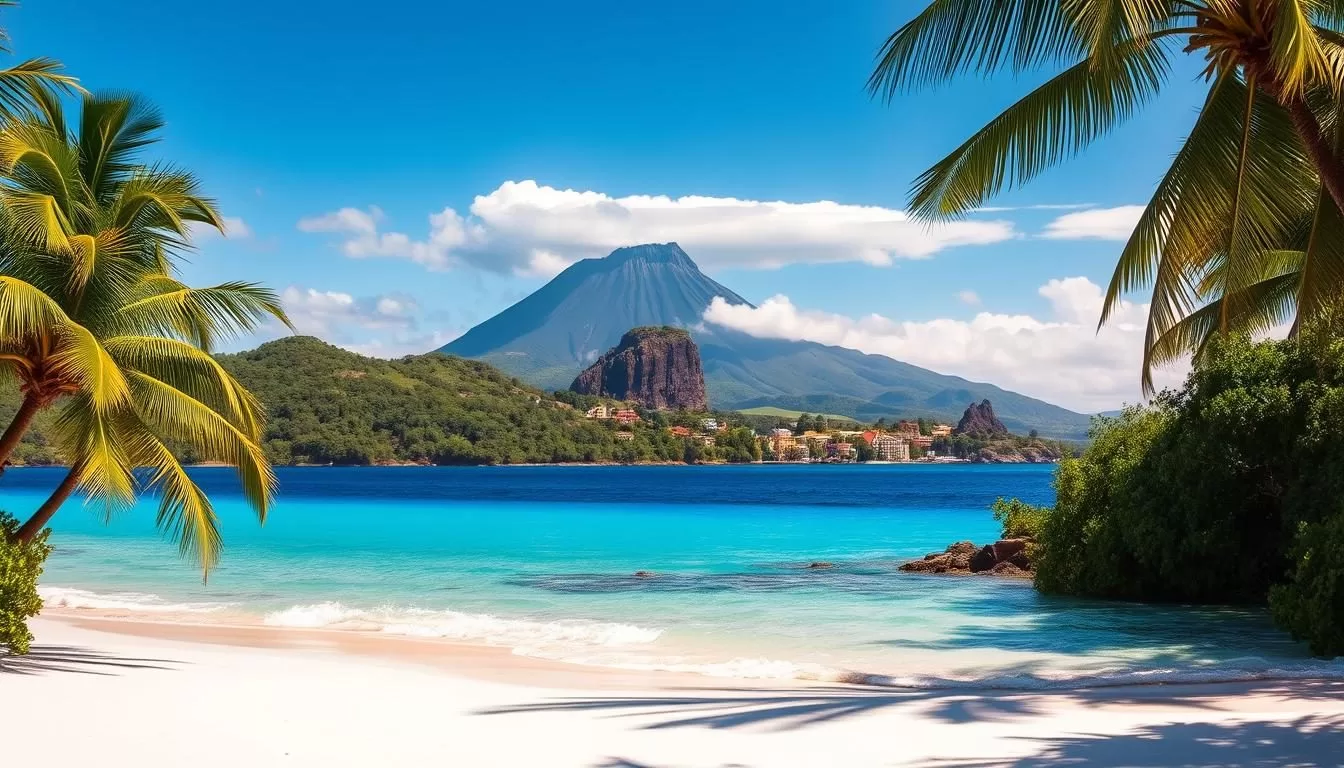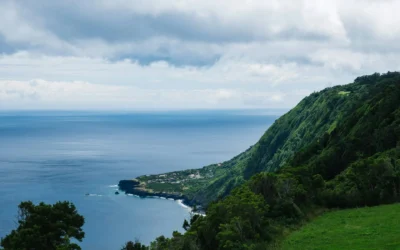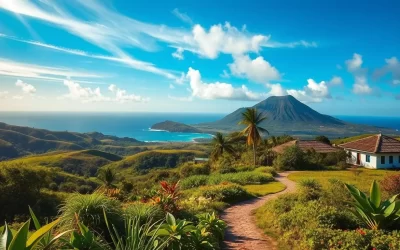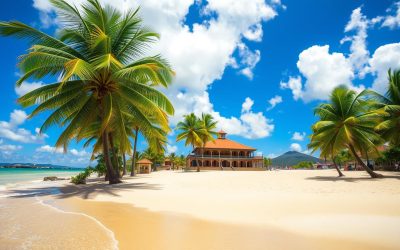✓ Accommodations ✓ Flights ✓ Rental Cars ✓ Tours & Activities
You’re planning a trip to the hidden gem of Mayotte, a French overseas department in the Indian Ocean, where African and Middle Eastern influences blend with French culture. To make the most of your travel experience, understanding the island’s weather patterns is crucial.
Mayotte boasts a tropical climate, with temperatures varying throughout the year. The island’s climate is characterized by distinct seasons, which significantly impact your trip. Knowing when to visit can enhance your overall experience on the island.
This article will guide you through the best time to visit Mayotte, covering both dry and wet seasons, peak tourist periods, and special considerations for activities like diving, hiking, and cultural experiences, ensuring you’re well-prepared for your trip.
Understanding Mayotte’s Tropical Climate
Mayotte’s tropical climate is marked by two main seasons, which are significantly different in terms of rainfall and weather conditions. Located in the Indian Ocean, near the equator, the island experiences a relatively consistent temperature throughout the year.
Geographic Location and Climate Influences
Mayotte’s geographic location significantly influences its climate. The island is surrounded by coral reefs, which play a crucial role in shaping its weather patterns. The warm waters of the Indian Ocean contribute to the island’s tropical climate, characterized by high temperatures and high humidity levels throughout the year.
Seasonal Weather Patterns
Mayotte experiences two distinct seasons: the dry season and the wet or rainy season. The dry season typically occurs from May to October, while the wet season is from November to April.
- The dry season is characterized by less rainfall and lower humidity, making it an ideal time for outdoor activities.
- The wet season brings significant rainfall, contributing to the island’s lush vegetation and natural beauty.
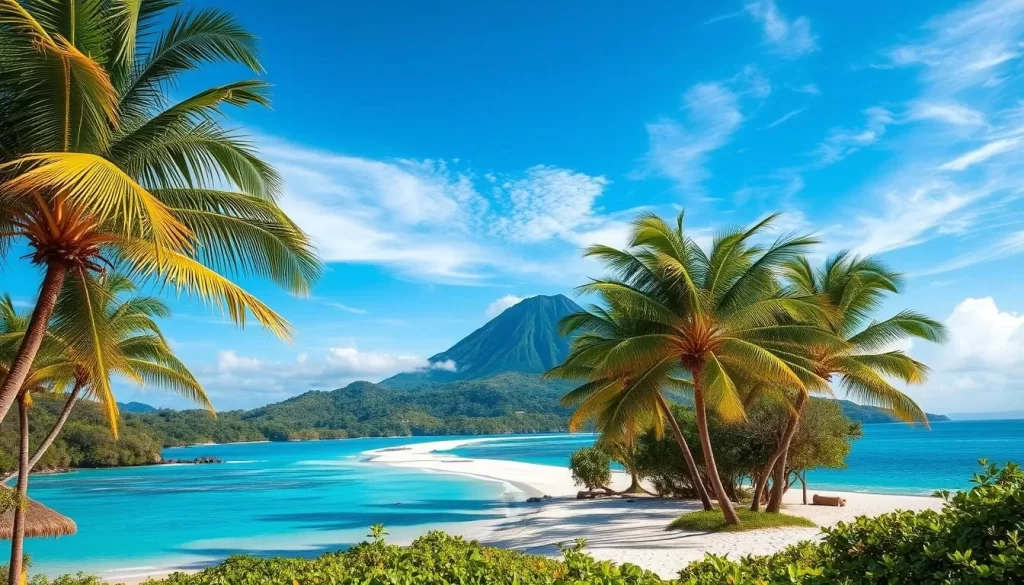
The changing weather patterns throughout the year affect not only the island’s vegetation but also the visibility for marine activities like snorkeling and diving. Understanding these patterns can help you plan your trip to Mayotte according to your preferences.
Mayotte’s Dry Season: May to October
Mayotte’s dry season, spanning from May to October, offers a unique blend of pleasant weather and exciting outdoor activities. This period is ideal for travelers looking to enjoy the island’s natural beauty without the hindrance of excessive rainfall.
Temperature and Rainfall Expectations
During the dry season, Mayotte experiences relatively stable and comfortable temperatures, ranging from the mid-20s to mid-30s Celsius (mid-70s to mid-90s Fahrenheit). Rainfall is significantly reduced, making it an excellent time for outdoor activities such as hiking, diving, and exploring the island’s landscapes. You can expect mostly sunny days with occasional light clouds.
Humidity and Wind Patterns
The dry season in Mayotte is characterized by relatively low humidity levels, making the weather feel more comfortable for travelers. Humidity typically ranges from 60% to 80%, which is relatively manageable compared to the wet season. The prevailing wind patterns during these months contribute to the pleasant weather conditions. The southeasterly trade winds help regulate the temperature and keep the island cool. These winds also impact the sea conditions, making certain areas more suitable for water activities like sailing and diving.
The combination of lower humidity and the refreshing trade winds creates a pleasant “feel” to the weather, beyond just the temperature readings. For instance, the winds can make the temperature feel cooler than it actually is, enhancing your comfort during outdoor explorations. To make the most of your experience, consider packing light, breathable clothing and staying hydrated.
Understanding these weather patterns can significantly enhance your experience on the island. By being prepared for the conditions, you can enjoy a wide range of activities, from relaxing on the beautiful beaches to engaging in more adventurous pursuits like windsurfing or sailing.
Mayotte’s Wet Season: November to April
Mayotte’s wet season, spanning from November to April, is characterized by significant rainfall and a heightened risk of cyclones. This period is crucial for the island’s ecosystem, bringing much-needed water to the region. However, it also poses challenges for travelers.
Monsoon Patterns and Rainfall
During the wet season, Mayotte experiences heavy monsoon rainfall, significantly impacting the island’s climate and daily activities. The rainfall is not consistent throughout the season, with some months receiving more rain than others.
The average rainfall in January, one of the wettest months, is around 256 mm, while in November, it’s about 108 mm. Understanding these patterns can help you plan your trip more effectively.
Cyclone Risk Assessment
Mayotte is located within the Indian Ocean cyclone belt, making it susceptible to cyclones during the wet season. The cyclone season typically runs from November to April, with the highest risk in January and February.
Historically, cyclones have had a significant impact on the island, causing damage and disrupting travel plans. Visitors should be aware of the cyclone warning systems in place and have a plan for emergencies.
| Month | Average Rainfall (mm) | Cyclone Risk Level |
|---|---|---|
| November | 108 | Low |
| January | 256 | High |
| April | 134 | Moderate |
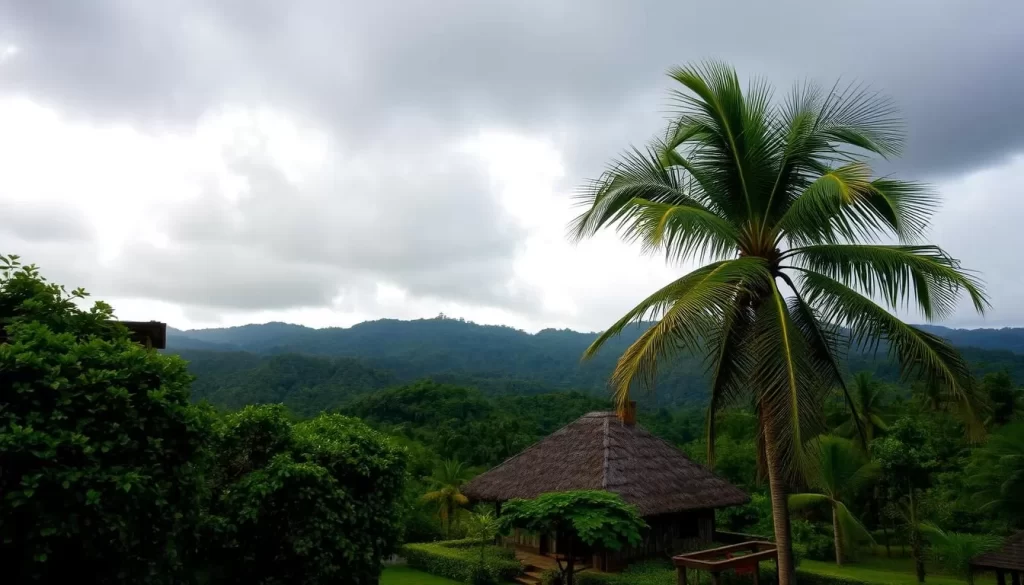
Peak Tourist Season: June to September
If you’re planning a trip to Mayotte, understanding the peak tourist season, which runs from June to September, is crucial for making the most of your travel plans and vacation experience on this beautiful island.
Advantages of Visiting During Peak Season
Visiting Mayotte during the peak season offers several benefits. The weather is generally dry and sunny, making it ideal for outdoor activities and exploring the island’s natural beauty. You can enjoy a wide range of activities, from snorkeling and diving to hiking and cultural events. Moreover, the peak tourist season means that there are plenty of tourists, creating a lively atmosphere.
To make the most of your trip, consider booking your accommodations and activities well in advance, as this is the busiest period. Here are some tips to keep in mind: plan your itinerary to include early morning visits to popular sites to avoid the crowds, and take advantage of the numerous events and festivals that take place during this time.
Potential Drawbacks and Considerations
While visiting Mayotte during the peak season has its advantages, there are also some potential drawbacks to consider. The high demand for accommodations and activities can drive up prices, making your travel more expensive. Additionally, popular sites and beaches may be more crowded, which could impact your overall experience.
To mitigate these issues, it’s essential to plan ahead. Booking your accommodations, flights, and activities early can help you secure better rates. Moreover, being flexible with your itinerary and considering less crowded alternatives can enhance your experience. For instance, visiting popular sites early in the day or exploring the island’s less known areas can provide a more peaceful experience.

Shoulder Seasons: April-May and October-November
The shoulder seasons in Mayotte, specifically April-May and October-November, present an attractive alternative to peak tourist times. During these periods, you’re likely to experience a more relaxed atmosphere and potentially lower prices for accommodations and activities.
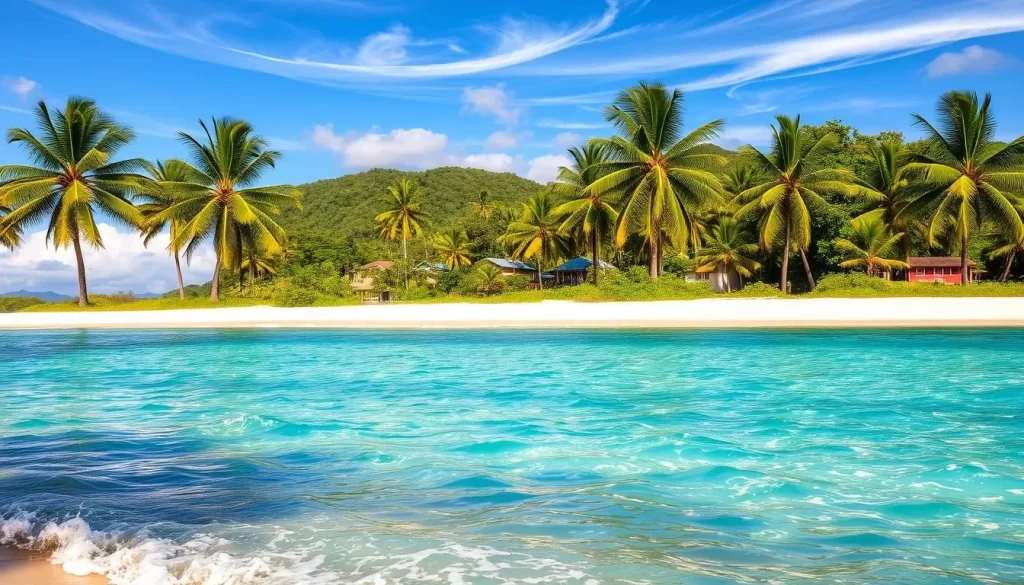
Weather Transitions and What to Expect
As Mayotte transitions between its dry and wet seasons, you can expect mild temperatures and fewer extreme weather events. April and May typically see a gradual decrease in rainfall, while October and November mark the beginning of the wet season, with occasional showers. Understanding these weather patterns can help you plan your vacation more effectively.
Benefits of Visiting During Transition Months
Visiting Mayotte during the shoulder seasons offers several benefits. You’ll encounter fewer crowds and fewer tourists, making for a more authentic experience. You can also look forward to deals on accommodations and tourist activities, making it a more budget-friendly time to visit. The changing seasons offer unique photographic opportunities, with lush landscapes in April and May, and the possibility of witnessing the island’s natural beauty as it transitions into the wet season in October and November.
| Month | Weather | Tourist Activity | Prices |
|---|---|---|---|
| April | Gradual decrease in rainfall | Moderate | Lower |
| May | Dry and mild | Fewer tourists | Competitive |
| October | Occasional showers | Less crowded | Discounts available |
| November | Start of wet season | Fewer crowds | Lower prices |
Considering the shoulder seasons for your visit can be a strategic decision, offering a good balance between decent weather and value for money. It’s an ideal time for budget-conscious travelers looking for the best time to visit Mayotte without the peak season prices.
Mayotte: Best Months for a Weather-Savvy Trip
When planning a trip to Mayotte, timing is everything to ensure a weather-savvy journey. Understanding the island’s climate and seasonal variations can help you make the most of your visit.
June to August: Optimal Weather Conditions
June to August are considered the best months to visit Mayotte due to the optimal weather conditions. During this period, the weather is dry and sunny, making it ideal for outdoor activities such as snorkeling, diving, and exploring the island’s natural beauty. With comfortable temperatures and minimal rainfall, these months offer a great time to enjoy the island’s beaches and marine life.
September to October: Fewer Crowds
As the peak tourist season winds down, September to October presents an excellent alternative for visiting Mayotte. The weather remains generally favorable, with warm temperatures and low humidity. With fewer tourists and fewer crowds, you can enjoy a more relaxed experience, taking advantage of better availability and potentially lower prices for accommodations and activities.
| Month | Weather Conditions | Tourist Crowds |
|---|---|---|
| June | Dry and Sunny | High |
| July | Dry and Sunny | High |
| August | Dry and Sunny | High |
| September | Warm and Dry | Moderate |
| October | Warm with occasional rain | Low |
Marine Life and Water Activities by Season
Mayotte’s marine life is a treasure trove of exciting experiences, varying with the seasons. The island’s coral reefs and diverse marine ecosystem make it an ideal destination for water activities such as diving, snorkeling, and whale watching.
Best Months for Diving and Snorkeling
The best time for diving and snorkeling in Mayotte is during the dry season, from May to October, when the waters are calm and visibility is high. This period offers an unparalleled experience, with clear waters revealing a vibrant array of marine life. The dry season’s favorable conditions make it an ideal time for exploring the island’s coral reefs and encountering an incredible variety of fish species.
Whale Watching Opportunities
Mayotte is a prime location for whale watching, particularly during the wet season, from November to April, when humpback whales migrate through the area. The peak months for whale watching are from July to September, although the actual migration happens from November to April. The best locations for whale watching are around the island’s outer reefs and near Petite-Terre. Weather conditions during these months can affect the success of whale watching excursions, so it’s essential to plan accordingly.
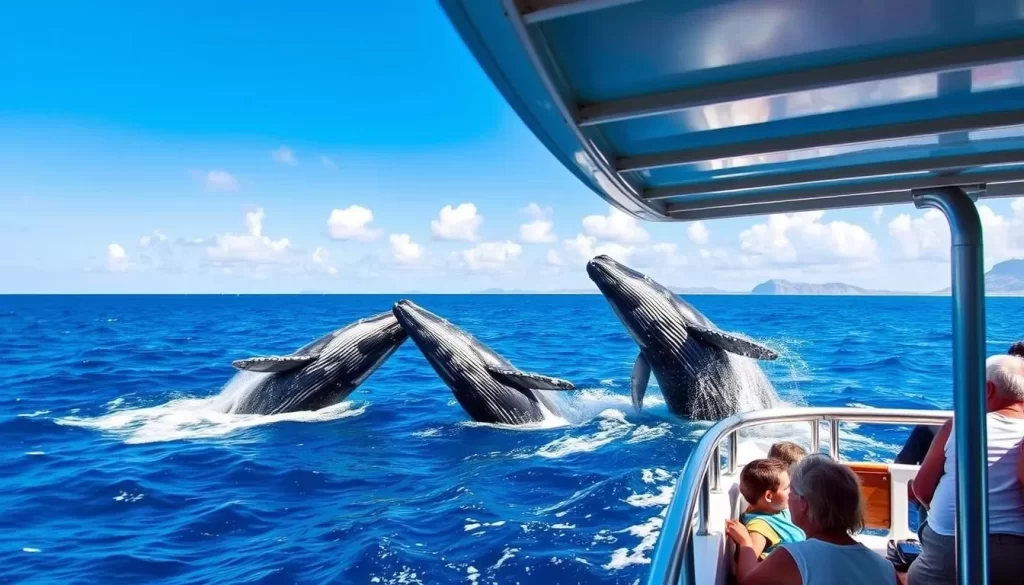
Regional Highlights and Seasonal Considerations
As you plan your trip to Mayotte, understanding the regional highlights and how they vary with the seasons is crucial. Mayotte, comprising Grande-Terre and Petite-Terre, offers a diverse range of experiences influenced by the time of year you visit.
Exploring Petite-Terre and Grande-Terre
Petite-Terre, a small island off the coast of Grande-Terre, is known for its pristine beaches and crystal-clear waters, making it an ideal place for a day trip. The dry season, from May to October, is the best time to explore these islands due to favorable weather conditions. During this period, you can enjoy activities like snorkeling and hiking without the hindrance of heavy rainfall.
Visiting the Lagoon and Outlying Islands
The lagoon and outlying island of Mayotte are renowned for their rich marine life and offer numerous opportunities for adventure, such as glass-bottom boat tours and kayaking. The calm sea conditions during the dry season make it an ideal time for these activities. As the seasons change, so does the marine life, offering a unique experience throughout the year.
Cultural Festivals and Events Calendar
As you plan your trip to Mayotte, you’ll want to experience the island’s unique cultural celebrations. Mayotte’s cultural identity is a blend of French, Malagasy, and Islamic influences, which are reflected in the various festivals and events that take place throughout the year.
Traditional Celebrations Throughout the Year
Mayotte’s cultural calendar is marked by numerous traditional celebrations. The island observes Islamic holidays such as Eid al-Fitr and Eid al-Adha, which are significant events in the Islamic calendar. Additionally, the local culture is rich in traditional dances, music, and crafts, which are often showcased during cultural festivals.
The people of Mayotte take great pride in their cultural heritage, and visitors can experience this firsthand by attending one of the many cultural events that take place throughout the year.
French and Malagasy Holiday Observances
Mayotte’s cultural calendar is also influenced by French and Malagasy traditions. The island observes French national holidays, such as Bastille Day, which is celebrated on July 14th. Malagasy culture also has a significant impact on the island’s holiday calendar, with many traditional Malagasy celebrations taking place throughout the year.
During these times, the island comes alive with music, dance, and traditional cuisine. Visitors can experience the unique blend of cultures that define Mayotte’s local culture.
Accommodation and Transportation Weather Factors
When planning your trip to Mayotte, understanding how weather affects your accommodations and transportation is crucial. The island’s climate can significantly influence your travel experience, making some periods more favorable than others for certain activities.
Booking Considerations by Season
Booking your accommodations in Mayotte should be done with the season in mind. During the dry season, from May to October, hotels and resorts are less crowded, offering a more relaxed atmosphere. In contrast, the wet season, from November to April, might see more rainfall, but it’s also a period when you can find better deals on accommodations. It’s essential to weigh the pros and cons of visiting during different seasons to make the most of your vacation.
Getting Around During Different Weather Conditions
Mayotte offers various transportation options, including public buses, taxis, rental cars, and boats. However, the weather can impact the convenience and safety of these options. During the wet season, road conditions can deteriorate, and ferry services might be disrupted due to rough seas. Tips for navigating these challenges include planning your itinerary flexibly and staying informed about local weather forecasts. By doing so, you can minimize disruptions and enjoy your travel on the island regardless of the rain.
Packing Tips for Different Seasons
Mayotte’s climate varies significantly between the dry and wet seasons, making it essential to tailor your packing list accordingly. Whether you’re heading to the island during the dry season or the wet season, being prepared is key to enjoying your trip.
Dry Season Essentials
During the dry season, which spans from May to October, you can expect pleasant temperatures and minimal rainfall. It’s ideal to pack lightweight and breathable clothing to stay comfortable. Don’t forget to include sunscreen, a hat, and sunglasses to protect yourself from the sun. Comfortable walking shoes are also a must for exploring the island.
Wet Season Must-Haves
The wet season, from November to April, brings higher humidity and frequent rain showers. It’s crucial to pack quality rain gear, including waterproof jackets and quick-dry clothing. Water-resistant footwear is also essential for navigating the island’s terrain. To protect your electronic equipment and important documents from the humidity and rain, consider packing them in waterproof bags or cases. Layering is key during this season, as temperatures can fluctuate significantly.
Conclusion
With its tropical climate, Mayotte offers a range of experiences throughout the year. Understanding the island’s weather patterns is key to planning a weather-savvy trip. The optimal months for visiting, based on weather considerations, are June to August, when the climate is particularly pleasant.
However, the shoulder seasons, such as April-May and October-November, also offer unique advantages, including fewer crowds and lower prices. Different activities, from diving and snorkeling to whale watching and cultural festivals, have their own ideal seasons, allowing you to tailor your trip to your interests.
To make the most of your trip, consider your personal preferences and priorities. With proper planning and the right expectations, you’ll find Mayotte to be a rewarding destination in any season. Booking guided tours can also enhance your experience, as local guides can help navigate seasonal conditions. Whether you visit during the peak season or opt for a more relaxed pace during the shoulder season, Mayotte’s blend of French, African, and Middle Eastern influences creates a fascinating destination worth discovering.
The above is subject to change.
Check back often to TRAVEL.COM for the latest travel tips and deals.
